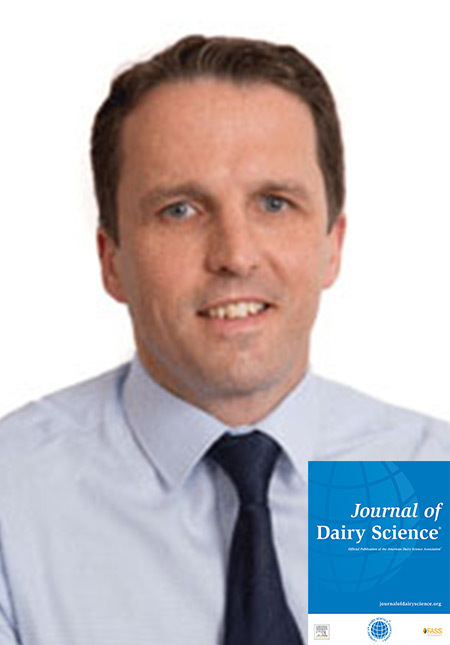
Name: Stephen Butler
Title: Dr.
Institution: Teagasc
Role with Journal of Dairy Science: Senior Editor in the Physiology section
Can you tell us a bit about your background, and what your current research is focused on?
I grew up in Ireland, and as a kid I helped out on my parents’ “part-time” farm, which changed in focus over the years. I studied animal and crop production as an undergraduate and did a master’s degree in animal nutrition (both at University College Dublin), and then conducted a PhD in reproductive physiology at Cornell University. I returned to Ireland, took up a research position with Teagasc based in Moorepark, and have been there since. Right now, we are working on strategies to successfully incorporate sexed semen into the herd breeding strategy, and exploring the role of assisted reproductive technologies to accelerate genetic gain in dairy breeds and also beef breeds suitable for crossing with dairy cows.
What advice do you have for grad students or other early-career scientists submitting their first manuscripts? What are common oversights you see?
The Journal of Dairy Science Instructions to Authors (https://www.journalofdairyscience.org/content/inst-auth) document is regularly updated, and for someone preparing a first manuscript, this is a valuable resource to help identify what is expected in a Journal of Dairy Science article. Read some highly cited articles and some Editor’s Choice articles in your area of research from the last couple of years. These are likely to be well-constructed articles, with appropriate descriptions of the methods, statistical analysis, and both interpretation and discussion of the results.
The most common oversights include failing to include all the required sections, inappropriate experimental design or statistical analysis, illegible text on figures, and poorly focused discussions.
Why should authors publish in JDS?
Authors have lots of different options to publish their work nowadays. To me, the Journal of Dairy Science is the leading journal for dairy science research. It is also the journal where it is most likely that good work will get noticed by academia, industry, and the wider stakeholders, which is critical for research to achieve impact.
What do you think are the biggest challenges currently facing the dairy industry, and how is JDS part of the solution?
Dairy farming is under the spotlight for several reasons: greenhouse gas emissions, water quality, biodiversity, animal welfare concerns, and intensification of production. There is also a growing movement towards consumers choosing plant-based beverages as alternatives to milk. The Journal of Dairy Science is the journal of choice for publications that objectively identify the challenges, and also critically evaluate potential solutions.